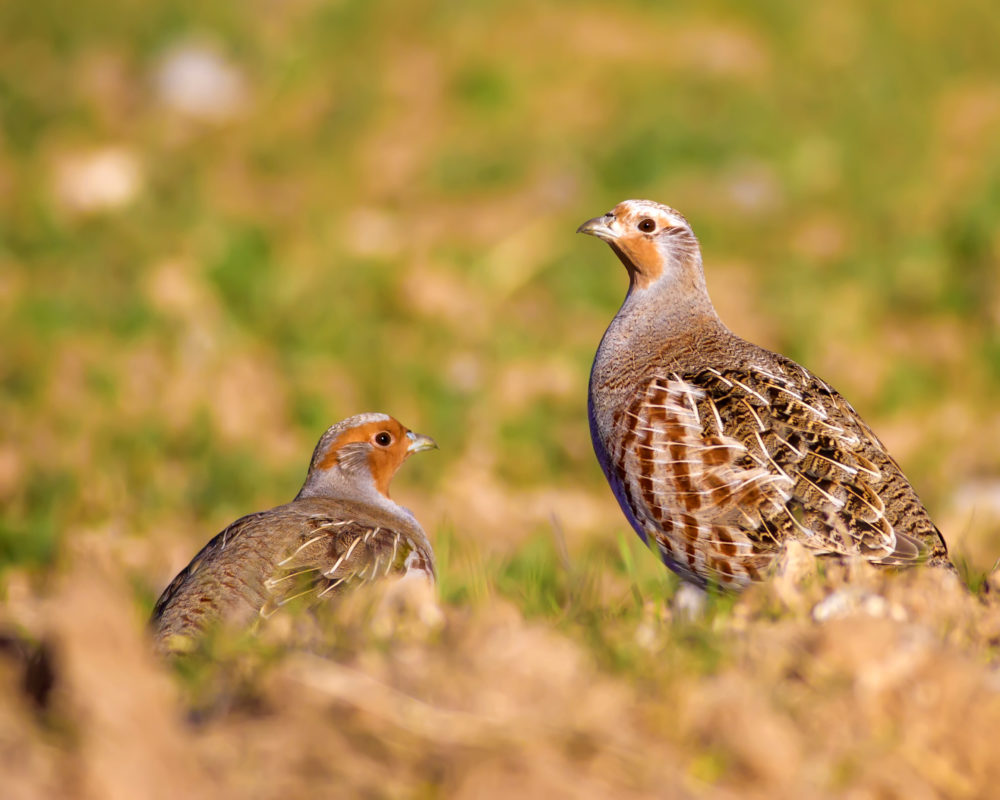What is a Grey Partridge?
The grey partridge is a native farmland bird species as shown in the picture below. It might be seen as a fairly innocuous bird, but it has huge connections to the British farming environment, and has been here since the last ice age. Traditionally it was adept at living in grasslands such as those we find on the Salisbury Plain today, but it can also exist quite happily in open arable landscapes such as those at Rushall Organics. However, since the Second World War the species has declined by over 80% leaving it endangered.
Why has the population fallen and what can we do to help it?
Since the introduction of agrochemicals and the expansion of intensive farming in the UK the population is fallen. This is because the species relies on the survival rate of its chicks, which feed solely on insects to give them enough protein to grow quickly to a strong enough size to be able to survive. This combine with changing weather patterns during the breeding season, and severe restrictions on predator controls has meant that the grey partridge has been up against it!
Reducing the use of agrochemicals, most importantly herbicides that kill weeds that were the food for the important insects will help in a big way to restoring grey partridge populations, combine this with a more environmentally friendly mindset and allowing hedges to grow more with larger areas left for grassy cover will help this species recover from the brink of extinction.
Doing this on a landscape scale will not only see the rise in this species but many others that rely on similar habitats and feed such as yellowhammer, corn bunting, lapwing and stone curlew to name a few. If farmers and landowners can adapt their cultures and their systems we could see this recovery happen in one generation, but this must be supported by government in the Agriculture and Environment Bill or we will lose yet more of our precious natural wildlife and biodiversity and move a step closer to losing the battle against climate change.
